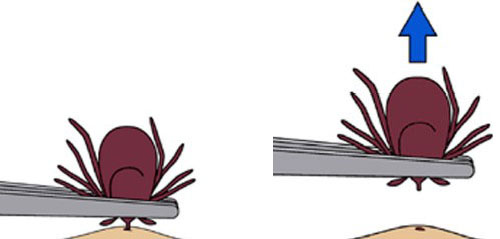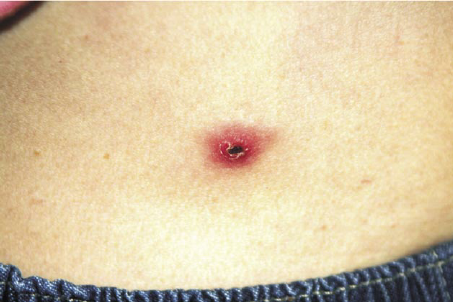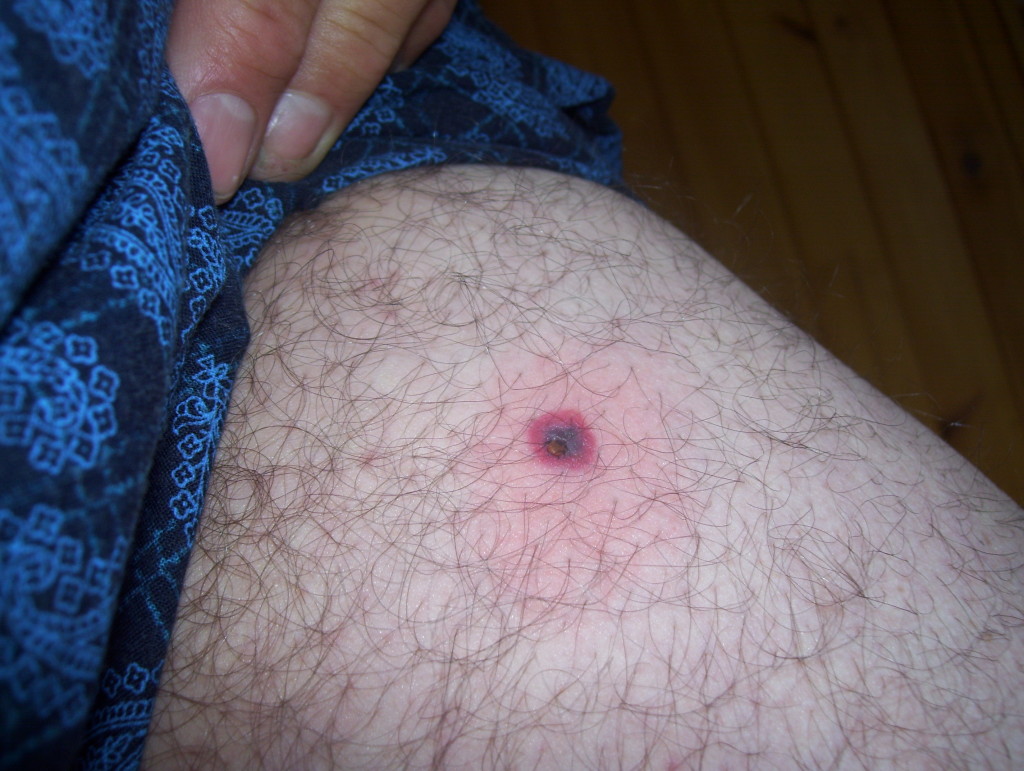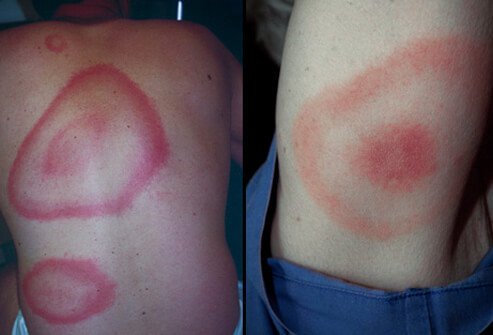Tick Bites
and Lyme Disease Risk
Preventing Tick Bites
Cover Up
-
-
wear closed-toed shoes.
-
wear long-sleeved shirts.
-
wear long pants, tucked into your socks.
-
Use Insect Repellent
-
-
something with “DEET” or “icaridin” in it.
-
put in on your clothes and exposed skin.
-
Check Yourself and Your Children After Being Outdoors
-
-
behind your knees.
-
on your head and in your hair.
-
in your belly button.
-
around your waistline.
-
in your groin areas.
-
in your armpits.
-
on your back (use a mirror, or have someone check for you).
-
Check your Pets
-
-
after they are outdoors.
-
ask your veterinarian for tips and options.
-
How to Remove a Tick
Remove a tick in less than 60 seconds just using dish soap and a Q-tip!
The tick will back out alive, fully intact, and no pincers left behind in the skin.
1. Simply cover the tick in a bit of dish soap.
2. Gently swirl a q-tip around the tick so as to irritate it.
3. The tick will back out on its own.
Note: Public Health no longer tests ticks in our area. There is no need to save or submit the tick.
How to Remove a Tick - The Old Way
Removing a tick is the same for humans and animals. Do not crush or damage the tick.
1. Use fine-tipped tweezers to grasp the tick as close to your skin as possible.
2. Pull the tick straight out, gently but firmly.
-
Do not jerk or twist the tweets while pulling the tick out.
-
Do not squeeze the tick – you might crush it.

3. Once you have removed the tick, wash your skin and hands with soap and water.
Note: Public Health no longer tests ticks in our area. There is no need to save or submit the tick.
If Pincers are Left in the Skin:
You do NOT have to worry if some of the tick’s pincers were left in your skin.
They will NOT transmit Lyme Disease.
Your body will gradually get rid of them, like having a sliver in your skin.
Do You Need Antibiotics?
Tick was on LESS THAN 24 hours:
If the tick was on you for LESS THAN 24 HOURS, then there is no chance of it transmitting Lyme Disease.
In fact, most studies suggest a tick needs to be latched on you for more than 2-3 days before it could start to transmit Lyme Disease.
Therefore, you do NOT need antibiotics.
Tick was on more than 24 hours:
If the tick was on you for more than 24 hours, or if you unsure how long the tick was on, then contact your doctor or nurse practitioner for advice.
Note: if the tick was not engorged and it was fairly easy for you to remove, then it is very unlikely that the tick was on you for very long.
Antibiotics can be prescribed if treated within 3 days of removing the tick:
-
ADULTS: a single dose of “doxycycline” is all that is required for prevention.
-
CHILDREN: unfortunately, children cannot take “doxycycline”. So, children require 3 weeks of antibiotics.
Some Photos of Interest
These are NOT Lyme Disease Rashes



Rather, they are “local reactions” to the tick bite, which can be normal and expected. It may take several weeks to gradually disappear.
THIS, is what a “Bull’s Eye” Lyme Disease rash looks like:

